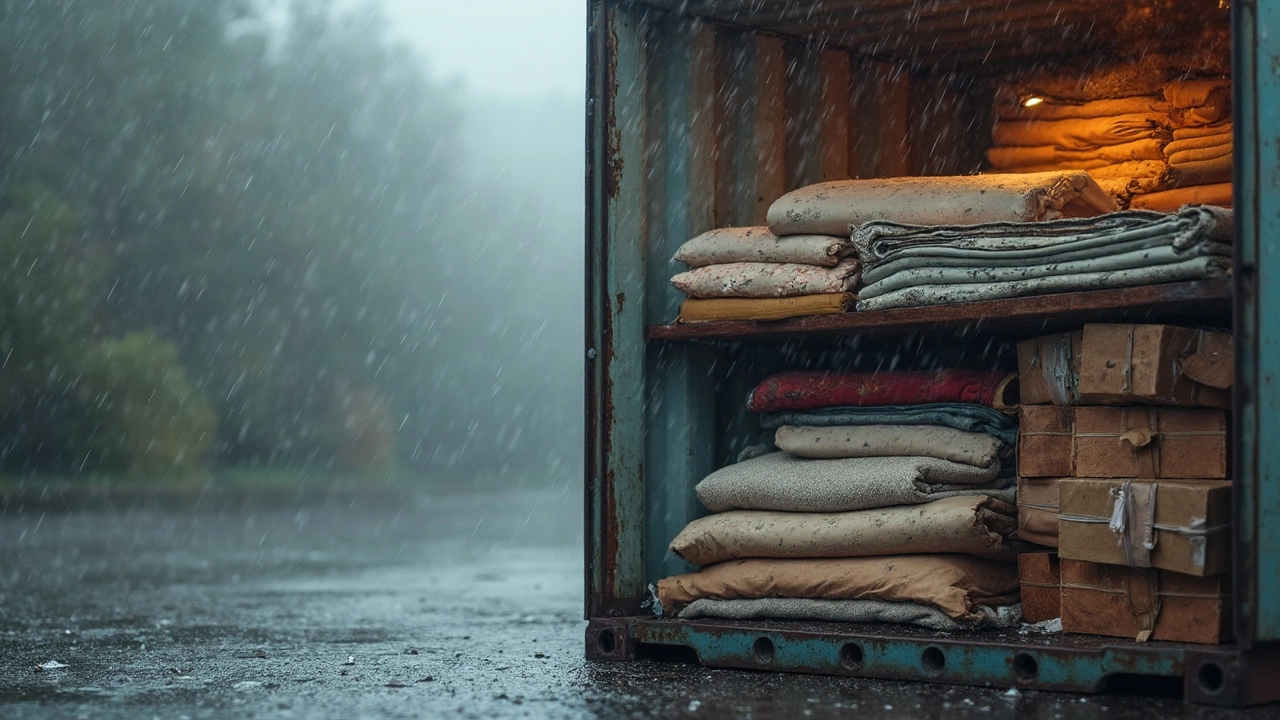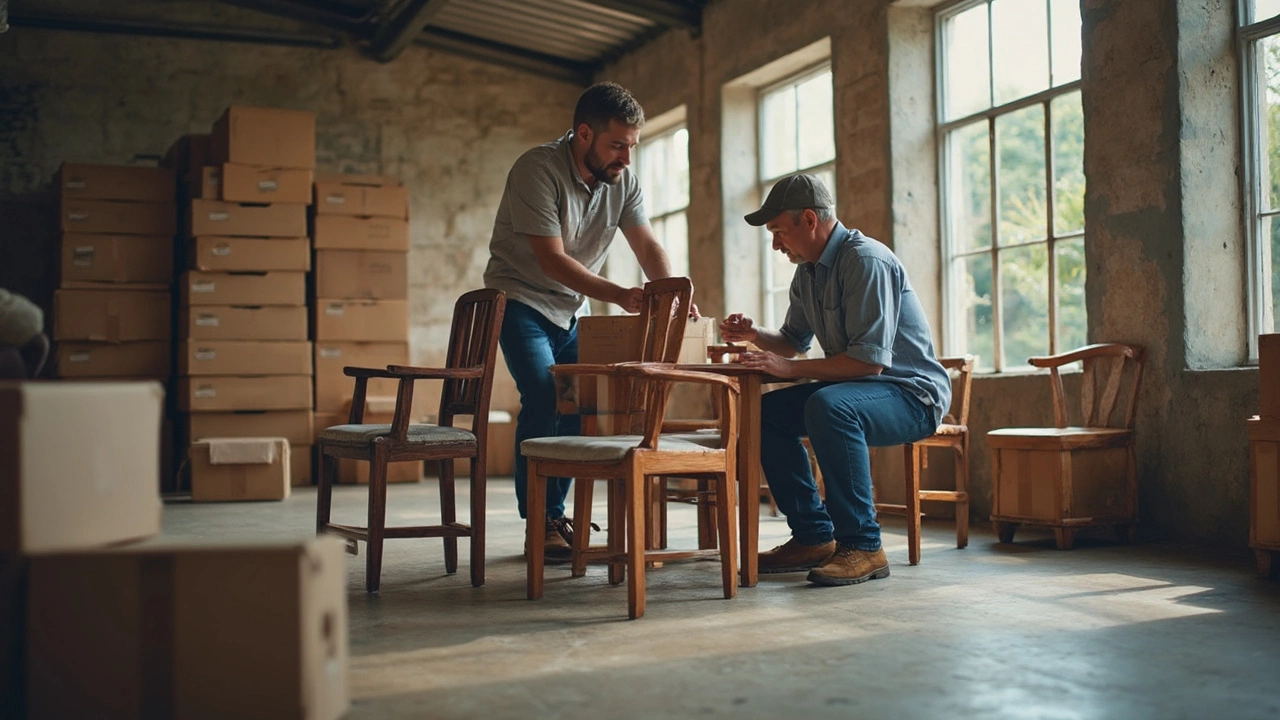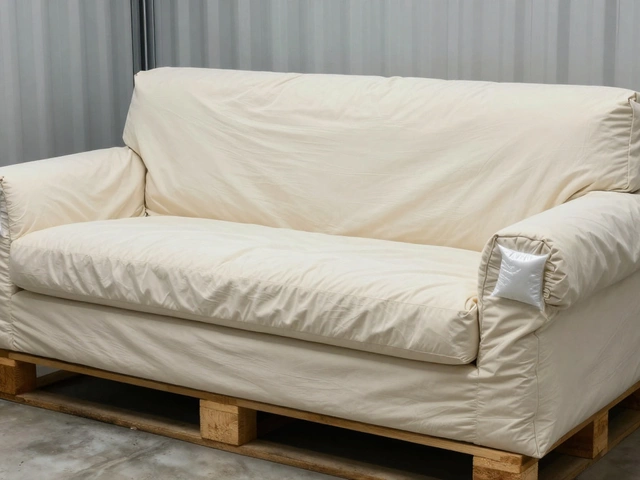You load up a container with your favorite couch, heirloom dresser, and the dining table you built with your bare hands—then you lock the doors and wave goodbye, maybe for months or even years. But is your furniture really safe inside that steel box? More and more people are turning to container storage for moves, remodels, travel, or downsizing. Still, there’s a side to container storage that rarely gets mentioned. Sure, it seems secure and convenient on the surface. What about humidity, pests, temperature swings, or even the dreaded mold outbreaks? These things can turn your furniture dreams into a warped, musty nightmare. So, what do you actually need to know?
Why People Choose Container Storage for Furniture
It feels like everyone from college students to retirees has tried container storage at least once. The big draw? Flexibility. Containers land right on your driveway or street, giving you all the time you need to pack or unpack. The pressure’s off, compared to renting a truck for just a few panicked hours. Some companies even deliver the packed container to another city—or hold it in a warehouse until you’re ready. That’s a game changer if you’re between houses or headed overseas. Another benefit is security. Containers are built from heavy-duty steel, which helps protect against theft. Modern containers lock up tight and often feature tamper-proof latches or tracking technology.
That sense of control is pretty hard to match. You can organize your items exactly as you want, right in front of your own home. Even deployment—aka moving the loaded container—is easier on your back than lifting boxes in and out of a moving truck all day. But is a steel shell enough to protect prized wooden antiques, soft fabric couches, or delicate chairs? Cost comes into the equation, too. Renting a container sometimes costs less than paying for a storage unit across town, especially if you’re moving long distance and the storage company waives some transport fees. People with tight schedules or those living in rural areas find containers especially practical.
Still, there’s a flip side. All the steel in the world can’t change the fact that containers often sit in direct sunlight, rain, or freezing wind for months. While they keep out thieves, Mother Nature might pose the bigger threat. Insurance policies for container-stored goods aren’t all the same, either—always read those fine-print clauses! Some insurance won’t cover water damage or pest infestations, and you’ll want to know before you park your furniture in there for the season. Containers are most often standardized—typically 8 feet wide by either 8, 12, 16, or sometimes 20 feet long—which means large or awkwardly shaped furniture can turn loading into a real-life game of Tetris. And still, it seems millions are betting that the trade-offs are worth it. So, what actually happens to your furniture during storage?
What Happens Inside a Storage Container? The Risks Most People Don’t See
Not all threats to furniture are obvious. Sun, temperature swings, dampness—all these things become more dramatic when you’re dealing with a sealed metal box. Containers are rarely insulated unless you specifically pay for climate control. On a hot July day, the temperature inside a standard storage container parked outside can soar well over 120°F (about 49°C). On the other hand, winter means subzero temperature risks for furniture adhesives and more brittle materials.
Dampness is the biggest silent enemy. According to a report by the Self Storage Association, “Moisture-related damage is the number one reason insurance claims are denied for self-stored furniture.” Leave any kind of leak, unsealed joint, or unprotected soft furniture and it’s open season for mold and mildew—especially if your local climate gets muggy. Now, let’s talk airflow. Standard containers aren’t exactly breathable. If you close the doors and don’t see the inside for eight months, there’s no circulation to keep humidity levels down. That trapped moisture can sneak into cushions, wood, and mattresses. Some people open their container later to find green or black mold webbing through their favorite armchair, or a musty odor that never quite leaves their once-gleaming dining set.
It’s not just the weather or humidity you need to think about. Have you ever wondered if rodents or insects could invade a supposedly secure container? Mice can squeeze through a gap as small as a dime, and spiders, beetles, or moths sometimes get in through vents, floor cracks, or when you’re loading the container. If you don’t pre-treat or inspect your belongings and container, you might be giving pests a ready-to-eat buffet. Even then, condensation from rapid temperature changes—say, a cool night after a blazing hot day—can cause droplets to form inside, adding even more moisture. Some container companies offer containers with built-in vents, but these vents typically do more for pressure than for serious airflow or moisture removal.
Light is another big issue that gets ignored until it’s too late. Containers left in direct sun can have small slivers of sunlight hitting the same furniture pieces every day. That can fade fabric colors or even cause warping in wooden items over time. There’s also the tricky problem of metal corrosion. If the container is older or not maintained, a damaged gasket or crack could let water seep in during heavy rain. Some people only find out when they smell the must after months in storage. Stacking furniture directly on the container floor can make things worse, because condensation often gathers on that cold metal surface first.
Here's a quick glance at the main risks:
| Risk | How It Happens | Impact on Furniture |
|---|---|---|
| High Temperature | Sun hits container, poor insulation | Cracked wood, softened glue, faded fabrics |
| Humidity/Moisture | Seal failure, condensation, poor airflow | Mold, mildew, warped wood, odors |
| Pests | Rodents/insects snuck inside at loading | Cushion and wood damage, nesting |
| Physical Damage | Improper stacking, shifting during transit | Dents, scratches, broken joints |
| Sunlight | Direct beam through crack or vent | Faded colors, splitting wood |
The safest containers are those kept in a climate-controlled, indoor facility, where temperature, humidity, and security are professionally managed. But outdoor containers? Those are a roll of the dice unless you prep your furniture and container carefully. Even the legendary “PODS” company mentions climate risk:
“Items susceptible to temperature or moisture damage, like antiques, should be stored with extra care in climate-controlled environments whenever possible.” — PODS Storage Blog (2023)

Preparing Furniture Before Putting it in a Container
If you’re still thinking about using a container, the prep work is where you win or lose. You can’t stop every risk, but you can tip the odds hugely in your favor with a few specific steps. Cleaning comes first—any dirt, dust, or food left on or in furniture is basically ringing the dinner bell for pests and can trap extra moisture. Always wipe every surface down with the right cleaner for wood, leather, fabric, or metal. For wood, a lightly damp cloth followed by a dry wipe will do. Just don’t soak anything, or you’re adding the moisture problem yourself.
Disassemble what you can. Bulky couches, bed frames, and tables often come apart into easier-to-pack pieces, which reduces the chances of pressure dents or snapped legs. Bag and label all screws or hardware—Ziploc bags and masking tape are every pro’s secret weapon. Next comes wrapping. You want breathable, padded protection. Never use plastic wrap directly on wood; it can trap condensation. Moving blankets, cotton sheets, and furniture pads are much safer for long stints in storage. If you’re storing upholstered furniture, slip covers or old bed sheets work wonders for keeping dust off without locking in moisture.
Desiccant packs (think silica gel) or special moisture absorbers can be thrown inside drawers and underneath larger items, helping to beat back the inevitable humidity. Some storage supply stores even sell larger moisture control boxes designed for containers. Remember to keep anything with batteries, oils, or flammable components somewhere else. These are almost always banned by storage companies, and they can also leak fumes that stain or weaken furniture over time.
For the load-in, try to keep everything off the container floor. Pallets, wooden two-by-fours, or even blocks under couch legs mean better air flow and less risk from pooling condensation. Create space between big pieces, especially along walls. Think of your layout like a mini maze for air, allowing some movement and lowering the risk of mildew. If you have fragile glass or mirrors, cardboard edge protectors (easy to cut from boxes) prevent cracking if anything nudges them during transport or bumpy repositioning on site.
Label everything, from the outside of furniture covers down to small screws. If you end up digging for a single chair or lamp later, you'll thank yourself. The reason most people lose out with container storage is a rush job during loading. Taking a little extra time upfront probably leads to fewer headaches when you see your stuff again…even months later.
How to Make Sure Your Furniture Survives Container Storage
The first rule: know the limits of your container. Is it sitting outside all summer in Phoenix, or parked in a cooler, shaded spot? Did you pay extra for indoor storage at the company’s depot? Ask for the specs—the container’s age, condition, and whether it has vents or insulation. Pro storage pros recommend opening container doors a crack on dry, cool days to let fresh air cycle in. If you’re not on site, see if the storage company can check and air out the unit every month or so.
Invest in the right gear. Moisture absorbers are cheap insurance, and so are sturdy moving blankets or custom-fitted covers for high-value items. Even simple furniture sliders or pads under legs prevent dents in both flooring and the furniture’s finish. For pieces you really care about (grandma’s china cabinet or a signed Eames lounge), ask the storage company about climate-controlled upgrade options—even if it costs a little more per month.
Don’t trust luck or guesswork with insurance. Dig into your homeowner’s or renter’s policy to see if your stuff is covered in offsite storage, and ask the storage company for their coverage terms. Some plans only cover loss from burglary or natural disaster, not mold or water damage. Document what you store—photos, receipts, serial numbers—before you lock up. That paper trail makes any claim way easier and less stressful if things go wrong.
When stacking or layering furniture, the rule is always: heaviest on the bottom, lighter on top, with blankets or cardboard dividing the layers. Keep soft stuff like mattresses and pillows along back or side walls. That provides a cushion for anything that shifts, and saves delicate pieces from being squashed. Don’t go overboard with vertical stacking; toppling risk is real, especially during container relocation or unexpected bumps. Another pro tip: leave a walkway to reach the back of the container if you’ll need anything before emptying the entire box.
If you know a massive storm is headed to your area (like hurricane season along the Gulf Coast), talk to the storage company about moving the container into an indoor facility or securing it to prevent flooding. Even gentle slopes in your yard can tilt a container, causing water to collect at one end. Check that doors seal tight after every load, and use a quality lock to deter both wildlife and people.
Here are some handy steps to increase furniture safety in container storage:
- Clean and dry furniture completely before storage.
- Wrap items in breathable materials; avoid plastic covering on wood or fabric.
- Disassemble big pieces to reduce stress points.
- Place moisture absorbent packs or pouches inside and around furniture.
- Use pallets or blocks under heavy pieces to keep off container floor.
- Label and photograph everything you store.
- Choose a shaded, level spot for outdoor containers whenever possible.
- Opt for climate-control or indoor storage upgrades for valuable items.
Even the best preparation isn’t perfect, but skipping these steps is pretty much daring mold or damage to show up. Prepping furniture to survive container storage, especially in rough climates, takes less time and money than trying to save ruined items later.

Is Storing Furniture in a Container a Good Idea? Short and Long-Term Pros & Cons
So, should you trust your couch or dining table to a storage container? If you prep well and understand the real risks, containers are a solid choice for short-term (weeks to a couple months) storage—especially when moving home, doing major renovations, or relocating in a hurry. The flexibility is tough to beat, and being able to fill the container right outside your door is a big plus. Most furniture survives short-term stints just fine if kept clean, dry, and off the floor, with extra attention to weatherproofing in wild climates.
Long-term storage is where you need to pay close attention. Furniture that’s worth more than sentimental value—think real antiques, vintage wood, signed art pieces—really deserves climate-controlled, indoor storage. Otherwise, you’re always rolling the dice with moisture, temperature, and pests. The biggest complaint people post online after long-term container use is damage from moisture or pests. Even with good prep, a brutal stretch of humidity or heat can cause issues you might not see coming. High-end storage companies now offer “white glove” container storage, with features like monitored climate, dust-free sealing, and regular inspection, so if you want peace of mind for serious valuables, ask about upgrade paths.
Major container storage brands, like PODS, U-Haul U-Box, and 1-800-PACK-RAT, offer both indoor depot and outdoor storage. Pay attention when booking—if you want climate protection, it’s almost always at an extra cost. Same for container quality: a newer or better-maintained container is less likely to have leaks, dents, or rust that could lead to future headaches. If you’re renting from a company that provides containers to your driveway, ask about shade, drainage, and delivery options for weather protection. Sometimes a tarp or canopy makes all the difference for outdoor units.
Security remains a strong suit for containers—padlocks, heavy steel construction, and remote monitoring (in higher-end models) mean theft is pretty rare. But that security doesn’t mean your stuff is protected from the weather. Always weigh convenience against the real downsides, especially if your local forecast includes wild swings in temperature or frequent storms. If you want to store furniture long enough to forget about it for a year, climate-controlled or indoor storage should be your go-to.
Here’s a quick side-by-side view to help weigh options:
| Short Term Storage (1-3 months) | Long Term Storage (6+ months) |
|---|---|
| High flexibility Lower risk with prep Outdoor generally okay Good for moves/renovations | Higher risk from humidity, temperature Climate-control strongly advised Insurance more important More pest, moisture risk |
No matter what you choose, prepping furniture and thinking through the climate risks before storage pays off. The real trouble comes from simply tossing everything into a sealed box and hoping for the best. Follow the proven steps above, and you’ll be in great shape—without any gnawing worries every time you remember your comfy old couch.




